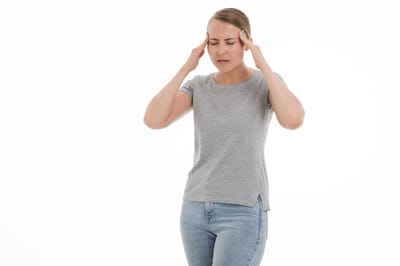IF body temperature going down


Hypothermia is an abnormally low body temperature. Normal body temperature should be somewhere close to 98.6° F. Hypothermia occurs when body temperature drops to 95 °F. It is the result of the body losing heat faster than it can make it.
Hypothermia is dangerous because it causes vital organs to stop working the way they should. It can lead to heart attack, kidney failure, and liver damage. It also affects the brain making it difficult to think clearly and move. As a result, someone suffering from hypothermia may not realize it. They may even engage in irrational or risky behaviours, such as removing clothing. If they do understand what’s going on, they may have trouble helping themselves or doing anything about their condition.
symptoms including:
- Clumsiness, fumbling, or lack of coordination
- Confusion and memory loss
- Drowsiness, exhaustion, and loss of consciousness
- Pale skin and cold hands and feet
- Slurred speech
- Shallow breathing and weak pulse
- Shivering
While you are waiting for help, take the following first aid steps for hypothermia:
- Move the person inside, somewhere warm, or to a shelter of any kind out of the wind. If you must remain outside or in a shelter, insulate the person from the ground with anything you can layer under them.
- Remove wet clothing as gently as possible.
- Cover the person with anything available, such as a dry sheet or jacket. Ideally, an electric blanket is the best option. Hot water bottles and chemical heat packs will also work. Just be sure to put something, such as a towel or shirt, between these heat sources and their skin to protect it. If nothing else is available, use skin-to-skin contact with a warm body.
- Concentrate on warming the head, neck and trunk of the body gradually. Warming or rubbing the limbs before the core is warm can add further stress to the heart and lungs.
- Help conscious people drink warm, and ideally sweet, liquids without caffeine or alcohol.
- Check unconscious people for signs of life including breathing and heartbeat. If these signs are absent, begin CPR (cardiopulmonary resuscitation).
Frostbite is another type of cold injury that can happen with hypothermia. It is the result of cold freezing a body part. The frozen body part becomes numb and loses . It most commonly affects the ears, nose, cheeks, fingers and toes. It can lead to permanent damage and even amputation.
Early signs of frostbite danger include pain and redness of the skin. Signs and symptoms of frostbite include:
- Firm or waxy skin
- Numbnesscolor
- White, grayish or yellowish skin
This can happen quickly in very cold temperatures. It can also happen with prolonged exposure to cool or cold temperatures as the body uses up all its stored energy.
Hypothermia happens when your body loses heat more quickly than it can make it. The body can lose heat in four ways:
- Conduction: The body transfers heat to matter. Conduction can happen when you lay on the ground. Your body will transfer heat to the earth. Conduction happens faster in water, which conducts heat 25 times faster than air. Moisture and wetness speed up the conduction process and causes hypothermia more quickly.
- Convection: The body loses heat to passing molecules. Wind is the main convection risk in hypothermia. Moving air will draw heat away from the body faster than calm air. This is why wind chills feel colder than the actual air temperature.
- Evaporation: The body loses heat when liquid converts to gas. Your body’s normal way of cooling itself involves evaporation of sweat, which cools the skin. In cold or cool environments, sweat evaporation will increase heat loss. Sweating can also lead to dehydration, which contributes to hypothermia.
- Radiation: The body loses heat to the environment. This is basic body heat loss to air that is colder than your body temperature. The greater the difference between your body temperature and the air temperature, the faster the loss occurs. Having exposed skin will also increase the rate of heat loss.
Babies and older people are especially susceptible to hypothermia. Other risk factors include:
- Alcohol and drug use, which can make you feel warm when you are in fact losing body heat
- Certain medications, such as antidepressants and sedatives, which can interfere with your body’s temperature regulation
- Fatigue
- Medical conditions, such as hypothyroidism, diabetes, and nervous system diseases and injuries
- Mental health problems and dementia
The main goal of hypothermia treatment is to return the body to a normal temperature. This should be done carefully to avoid further injury, and extreme heat should be avoided. You can perform some treatments as part of first aid, but certain treatments require professional medical equipment and trained personnel, such as emergency medical technicians, nurses, and doctors.
Common treatments for hypothermia include:
- Moving the person out of the cold
- Placing warm saline in the stomach, colon or bladder
- Providing cardiopulmonary resuscitation (CPR) if necessary
- Providing warm intravenous fluids
- Providing warm, humidified oxygen through a facemask or nasal tube
- Providing warm, nonalcoholic beverages if the person is awake and alert
- Removing wet clothing
- Using skin-to-skin contact to warm the person
- Warming the blood if equipment is available
- Warming the torso, neck, head and groin first
- Wrapping the victim in an electric blanket if possible
You can take steps to protect yourself and prevent hypothermia including:
- Adequately heat your home during cold weather
- Avoid overexertion in cold weather, which can result in sweating and wet clothing
- Change out of wet clothing, including gloves, mittens, hats and socks, as soon as possible
- Cover your skin including your hands and head
